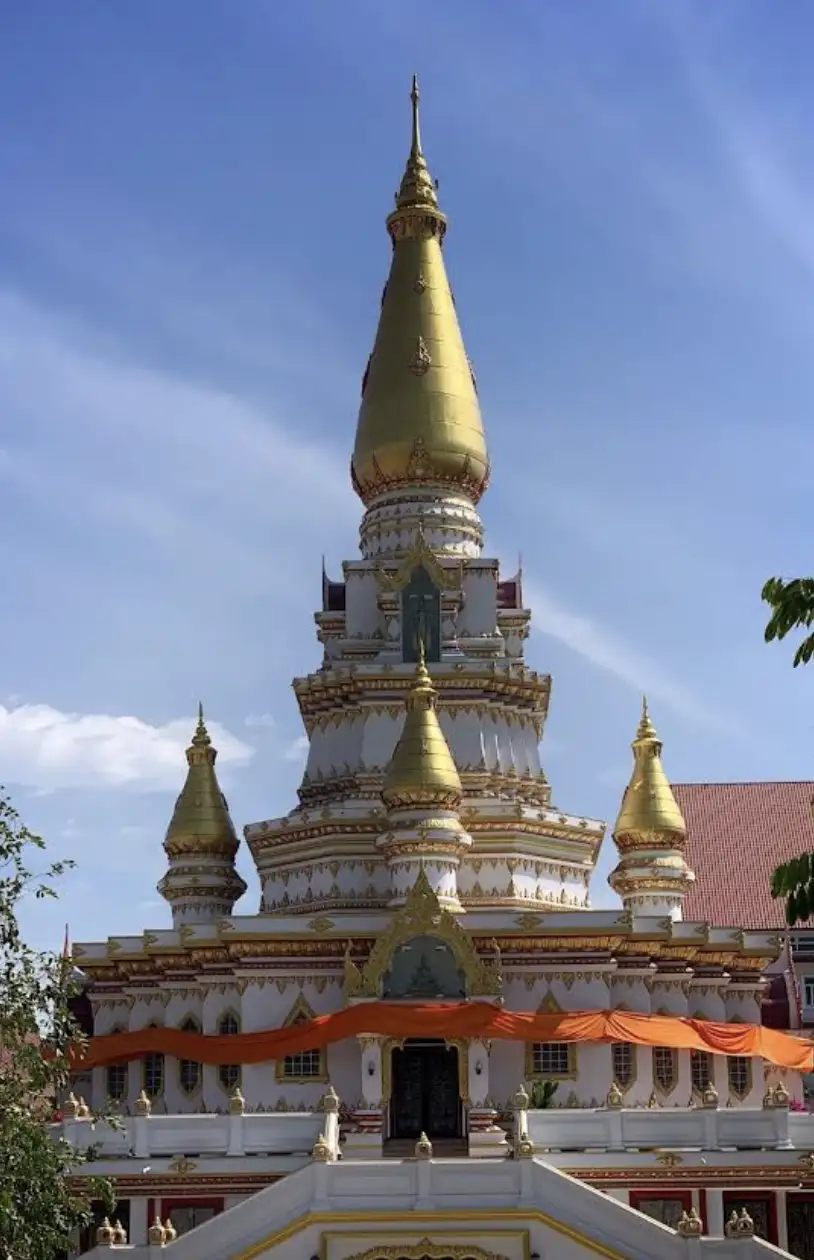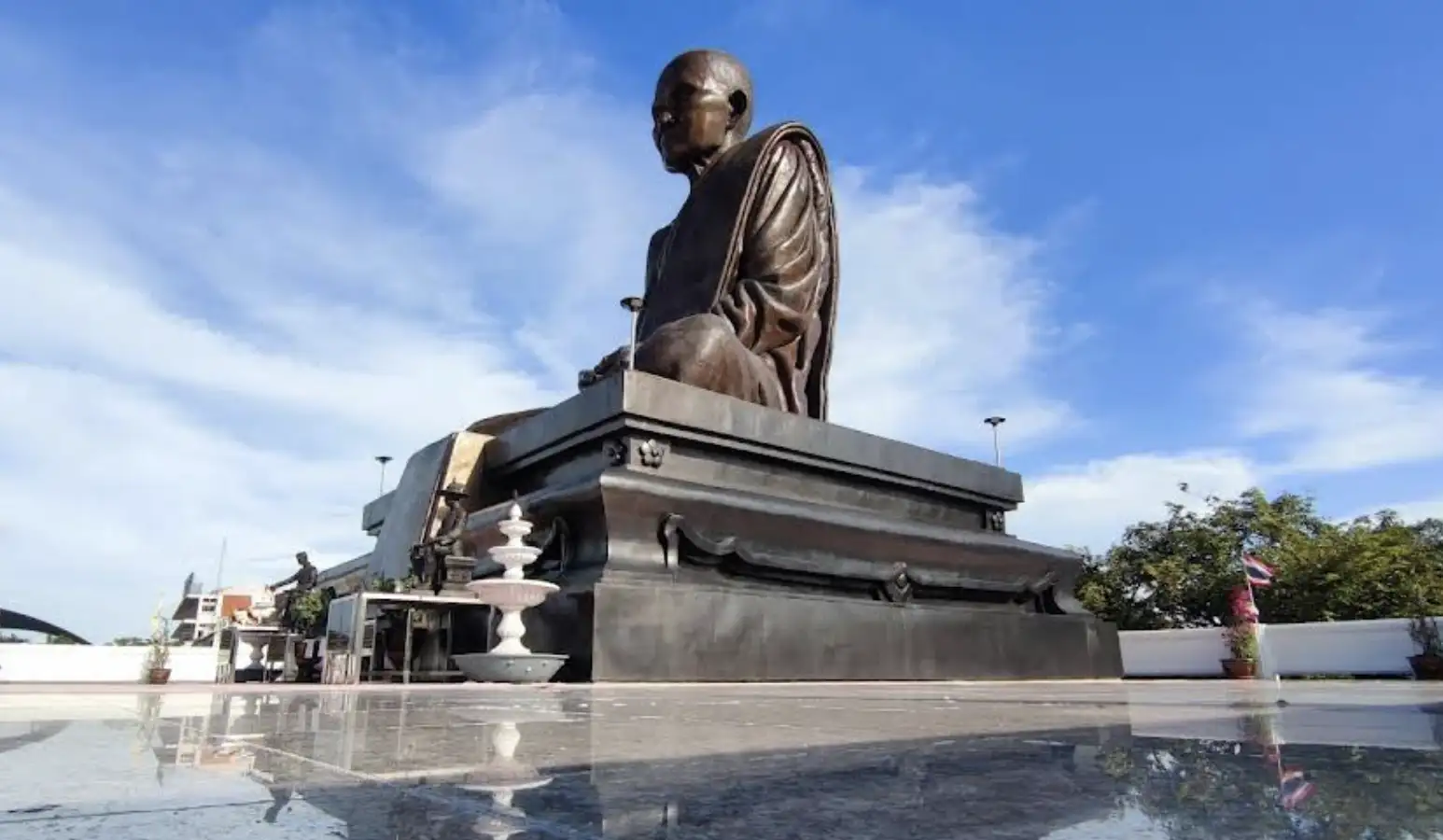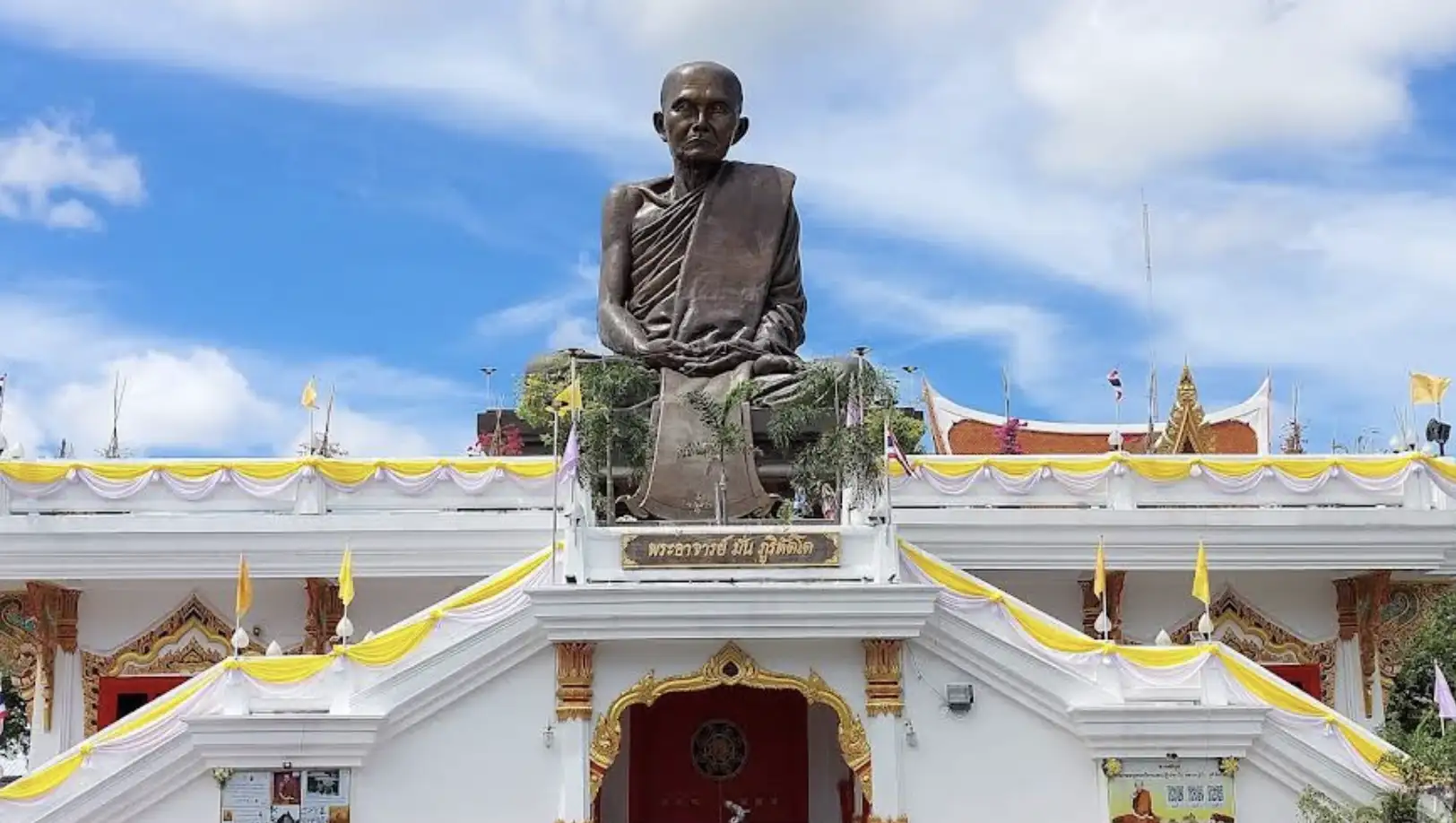As someone who’s wandered through countless temples in Thailand, from the dazzling Wat Arun to the iconic Wat Pho, I thought I’d seen it all. But Wat Phutthabucha, tucked away in a quieter corner of Bangkok, surprised me with its serene charm and authentic local vibe. This isn’t your typical tourist-packed temple with selfie sticks and crowded courtyards. Instead, it’s a place where you can feel the heartbeat of Thai spirituality, connect with locals, and soak in an atmosphere that’s both peaceful and grounding. In this guide, I’ll share my personal experience visiting Wat Phutthabucha, offering practical tips, cultural insights, and a glimpse into why this lesser-known temple deserves a spot on your Bangkok itinerary.
Discovering Wat Phutthabucha: My First Impressions
I stumbled upon Wat Phutthabucha by chance while researching off-the-beaten-path spots in Bangkok. Most travel blogs focus on the big names, but a brief mention on a Trip.com review caught my eye, describing a tranquil temple with a canal where you could feed fish and witness monks collecting morning alms. That was enough to pique my curiosity, and I decided to make the trek to this lesser-known gem in the Bang Mod area of Thung Khru district.

Getting to Wat Phutthabucha was an adventure in itself. I hopped on a Grab taxi from my hotel in Silom, and the 30-minute ride took me through bustling Bangkok streets that gradually gave way to quieter, residential neighborhoods. The temple’s location, far from the touristy chaos of the city center, already hinted at the calm I’d find there. As we pulled up, I was greeted by a modest entrance—no grand golden spires or hordes of visitors, just a simple gate leading to a courtyard bathed in soft morning light.
Stepping inside, I immediately felt a sense of peace. The temple grounds were clean and well-maintained, with the faint scent of incense lingering in the air. Unlike the more famous temples, Wat Phutthabucha didn’t overwhelm with opulence. Its beauty lay in its simplicity—a place where locals come to pray, make merit, and find solace. I knew right then this visit was going to be special.
Exploring the Temple Grounds: A Blend of Serenity and Tradition
Wat Phutthabucha’s layout is typical of Thai temples, with a central ubosot (ordination hall), a chedi (stupa), and smaller structures scattered around the grounds. But what sets it apart is its lived-in, community feel. As I wandered through the courtyard, I noticed monks in saffron robes tending to daily tasks—some sweeping the grounds, others chatting quietly with visitors. There was an authenticity here that I hadn’t felt in more tourist-heavy temples.

The ubosot, with its classic Thai architecture, was the first stop on my self-guided tour. The exterior featured intricate murals depicting Buddhist stories, their colors faded but still vibrant enough to tell a tale. Inside, a golden Buddha statue sat majestically, surrounded by offerings of flowers, candles, and incense. I took a moment to sit cross-legged on the cool tiled floor, mimicking the locals who were deep in prayer. The silence was profound, broken only by the occasional chirping of birds outside. It was a reminder of why temples like this are sacred spaces—not just for their beauty, but for the calm they instill.
One of the highlights of Wat Phutthabucha is the small canal running alongside the temple grounds. I’d read about the fish-feeding activity, so I purchased a bag of bread crumbs from a nearby vendor for a few baht. Watching the fish swarm to the surface as I tossed crumbs into the water was oddly therapeutic. It’s a simple activity, but there’s something joyful about it, especially when you see kids giggling as they join in. I couldn’t help but smile as a local woman showed me how to scatter the crumbs evenly to “share the merit” with all the fish.
Morning Alms: A Window into Thai Culture
If you visit Wat Phutthabucha, try to arrive early—around 6:00 AM—to witness the morning alms-giving ceremony. I planned my visit to coincide with this ritual, and it was one of the most memorable parts of my trip. Monks from the temple walk barefoot along the streets surrounding the temple, carrying alms bowls to collect offerings from locals. I joined a small group of residents who were preparing sticky rice, fruits, and packaged foods to offer. The process was humbling—kneeling on a mat, placing food in the monks’ bowls, and receiving a quiet blessing in return.
What struck me was the sense of community. This wasn’t a performance for tourists; it was a daily ritual that locals have practiced for generations. As a foreigner, I felt like a guest welcomed into a sacred tradition. If you decide to participate, be sure to dress respectfully (more on that later) and follow the locals’ lead. You can purchase alms offerings from nearby vendors, but I recommend bringing your own if you want to make it more personal.
Practical Tips for Visiting Wat Phutthabucha
To make the most of your visit, here are some practical tips based on my experience:
- Getting There: Wat Phutthabucha is in Bangkok’s Thung Khru district, about 10-12 km from the city center. A taxi or Grab ride from central Bangkok (like Siam or Silom) costs around 150-200 THB. Alternatively, you can take the BTS Skytrain to Bang Wa station and then a taxi for the last leg, though public transport options are limited in this area. If you’re feeling adventurous, rent a scooter, but be cautious of Bangkok’s traffic!
- Dress Code: Like all Thai temples, Wat Phutthabucha requires modest attire. Shoulders and knees should be covered, so pack a lightweight scarf or sarong if you’re wearing shorts or a sleeveless top. I wore a loose linen shirt and long pants, which kept me comfortable in the humid weather. Shoes must be removed before entering the ubosot, so slip-on shoes are convenient.
- Opening Hours: The temple is generally open from early morning (around 5:00 AM) to late afternoon (around 6:00 PM). I recommend visiting early to catch the alms-giving and avoid the midday heat. Check Trip.com for any updates on hours or special events.
- Cost: Entry to Wat Phutthabucha is free, though donations are appreciated. Fish food costs 10-20 THB, and alms offerings (if you buy them on-site) are similarly affordable.
- Language: English isn’t widely spoken here, as the temple caters mostly to locals. A few basic Thai phrases, like “sawasdee” (hello) or “khob khun” (thank you), go a long way. I used a translation app to communicate with a monk who kindly explained the temple’s history.
- What to Bring: Sunscreen, a hat, and a reusable water bottle are musts, as there’s little shade in the courtyard. A small notebook or journal is great for jotting down reflections, especially if you’re inspired by the temple’s serene atmosphere.
Cultural Insights: Making Merit and Connecting with Locals
One of the things I loved about Wat Phutthabucha was how it offered a window into Thai Buddhist practices. “Making merit” is a core concept in Thai culture, and I saw it in action here—whether through feeding fish, offering alms, or lighting incense. A local woman explained to me that these acts are believed to bring good karma and spiritual blessings. Even as a non-Buddhist, I found the rituals meaningful, a way to connect with the community and reflect on gratitude.
The temple also attracts international monks, which adds a unique dimension. I met a young monk from Laos who was studying at the temple, and he shared stories about his journey to Bangkok. These interactions reminded me that Wat Phutthabucha isn’t just a place for worship—it’s a hub for cultural exchange and learning.
Nearby Attractions and Food Options
While Wat Phutthabucha is a bit off the radar, the surrounding Bang Mod area has a few gems worth exploring. After my temple visit, I wandered to a nearby local market (about a 10-minute walk) where I sampled mango sticky rice and spicy som tam from a street vendor. The food was fresh, cheap, and bursting with flavor—exactly what you’d expect from Bangkok’s street food scene. If you’re craving something more substantial, there are small restaurants serving classic Thai dishes like khao soi and tom yum within a short taxi ride.
For those looking to extend their day, consider pairing your visit with a trip to Wat Sai Floating Market, about 20 minutes away by car. It’s a smaller, less touristy market where you can hop on a boat and explore canals lined with vendors selling everything from grilled seafood to handmade crafts. Alternatively, the sprawling Bang Nam Phueng Floating Market is another nearby option, offering a lively mix of food and souvenirs.
Why Wat Phutthabucha Stands Out
After visiting Wat Phutthabucha, I realized what makes it special: it’s a place where you can slow down and truly immerse yourself in Thai culture. Unlike the grand temples that dominate Bangkok’s tourist circuit, this one feels like a hidden sanctuary. The absence of crowds meant I could take my time, sit quietly, and absorb the surroundings without feeling rushed. The fish-feeding by the canal, the morning alms ritual, and the warm smiles of locals all left a lasting impression.
My visit also taught me the value of seeking out lesser-known spots. Wat Phutthabucha may not have the fame of Wat Arun or the golden splendor of Wat Phra Kaew, but it offers something just as precious: authenticity. It’s a reminder that travel isn’t always about checking off the must-see landmarks—it’s about finding places that speak to you, that make you feel connected to a culture and its people.
Final Thoughts: Should You Visit?
If you’re planning a trip to Bangkok and want to experience a side of the city that’s less polished and more heartfelt, Wat Phutthabucha is worth a visit. It’s perfect for travelers who crave meaningful experiences over Instagram-worthy backdrops (though the temple is still plenty photogenic). Whether you’re a Buddhist looking to make merit or simply a curious explorer like me, this temple offers a chance to pause, reflect, and connect.
I left Wat Phutthabucha feeling lighter, with a deeper appreciation for Thailand’s spiritual traditions. As I tossed my last handful of fish food into the canal and watched the ripples spread, I couldn’t help but think: sometimes, the best travel experiences are the ones you didn’t expect to find. So, grab your sarong, set your alarm for an early start, and head to Wat Phutthabucha—you might just find a piece of Bangkok’s soul waiting for you.

